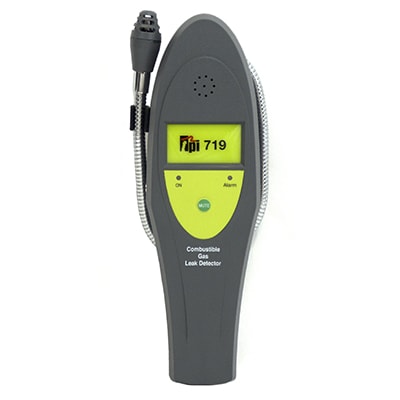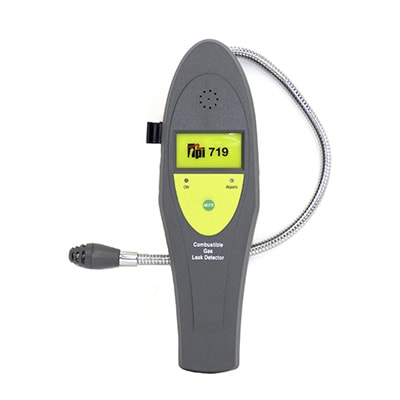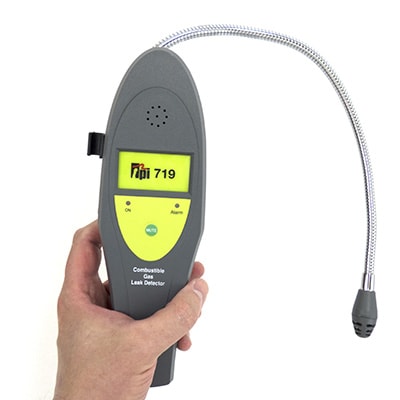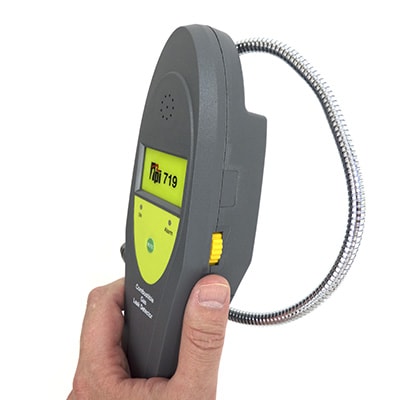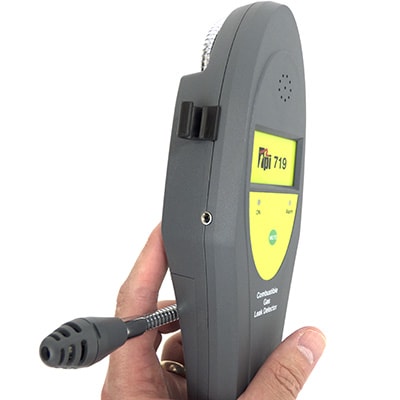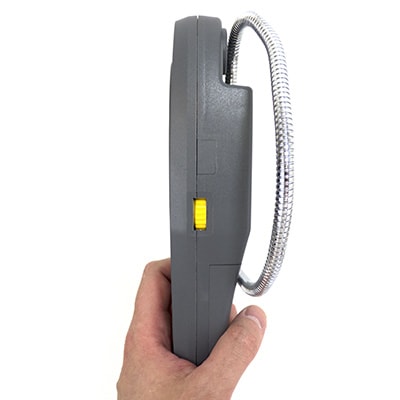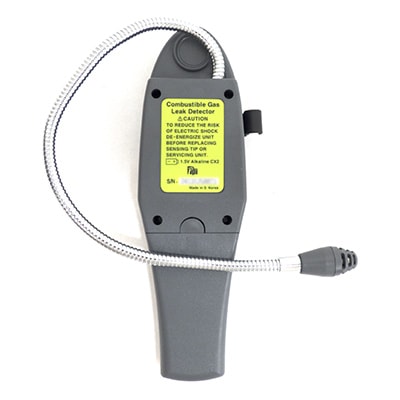The 719 offers 30ppm sensitivity to detect combustible gasses.
Easily operated with one hand, leaks are pinpointed using the audio and visual indicators. An adjustable “tic” rate helps eliminate background gas concentration in contaminated environments.
- Instant response
- 30 ppm (methane) sensitivity
- Adjustable tic rate
- One-hand operation
- Visual and audible leak indication
- 16” gooseneck
- Soft carrying pouch
The 719 is easy to use and is built to last. It is backed by a 3 year limited warranty.
The 719 comes complete with the following accessories:
- Carrying Pouch (A780)
- Instruction Manual
- Battery and Sensor (Installed and Calibrated)

| Model 719 Specifications | ||
|---|---|---|
| Combustible Gasses Detected (Partial List) |
Methane, Natural Gas, Gasoline, Diesel,
Propane (LPG), Butane, Kerosene |
|
| Sensitivity | 30ppm (methane) | |
| Sensor Type | Low power semiconductor | |
| Probe Length | 16” | |
| Leak Indication | Audio / Visual | |
| Adjustable Tic Rate | Yes | |
| Alarm | No | |
| Carbon Monoxide Measurement | No | |
| %LEL Indication | No | |
| Internal Sample Pump | No | |
| Intrinsic Safety Rated | No | |
| Battery | “C” cell (2) | |
| Weight | 1.1 lb | |
Model 719 Applications
- Detect combustible gasses including natural gas methane, propane (LPG), gasoline, diesel, and kerosene
- Trace natural gas lines and fittings for leaks
- Check gas generation for leaks
Frequently Asked Questions
1. What is the difference between the HXG-2 and the 720b?
The HXG-2 is intrinsically safe and has an adjustable alarm.
2. Can I use the 720b or HXG-2 to test for carbon monoxide as well as combustible gas leaks?
The HXG-2 and 720b are designed to detect combustible gas leaks. The 735 or 775 are the best choices to test for carbon monoxide as well as combustible gas leaks.
3. What is the difference between the 735 and 775?
Both the 775 and 735 can be used to test for carbon monoxide in ambient air as well as test for combustible gas leaks. The 735 is pump driven and can be used to test for CO infurnaces as well. When testing for combustible leaks the 775 uses an audible “tic” and visual indication while the 735 has audible indicationand displays the leak level in %LEL.
4. I only need to test for combustible gas leaks, which detector should I choose?
The 725 is pocket sized with LED and audible indicators that activate at preset leak levels. The 725 can detect a leak but does nothave the capability to determine the source. The 720b and HXG-2 are more sensitive, utilize a thumb wheel adjustable “tic” rate, and have goosenecks that enable them to reach into tight areas and not only detect a leak but determine the source. The HXG-2 has an adjustable alarm and is intrinsically safe.
5. I need to be able to produce a “hardcopy” of test results. Do any of the TPI detectors have this capability?
Yes, the 735 has an infrared interface for printing testing results.
6. What gases can be detected?
Gases that can be detected include but are not limited to Acetone, Alcohol, Butane, Gasoline,Kerosene, Methane, Natural Gas, and Propane.
Product Documentation![]()
Click below to view or download product documentation PDFs:

